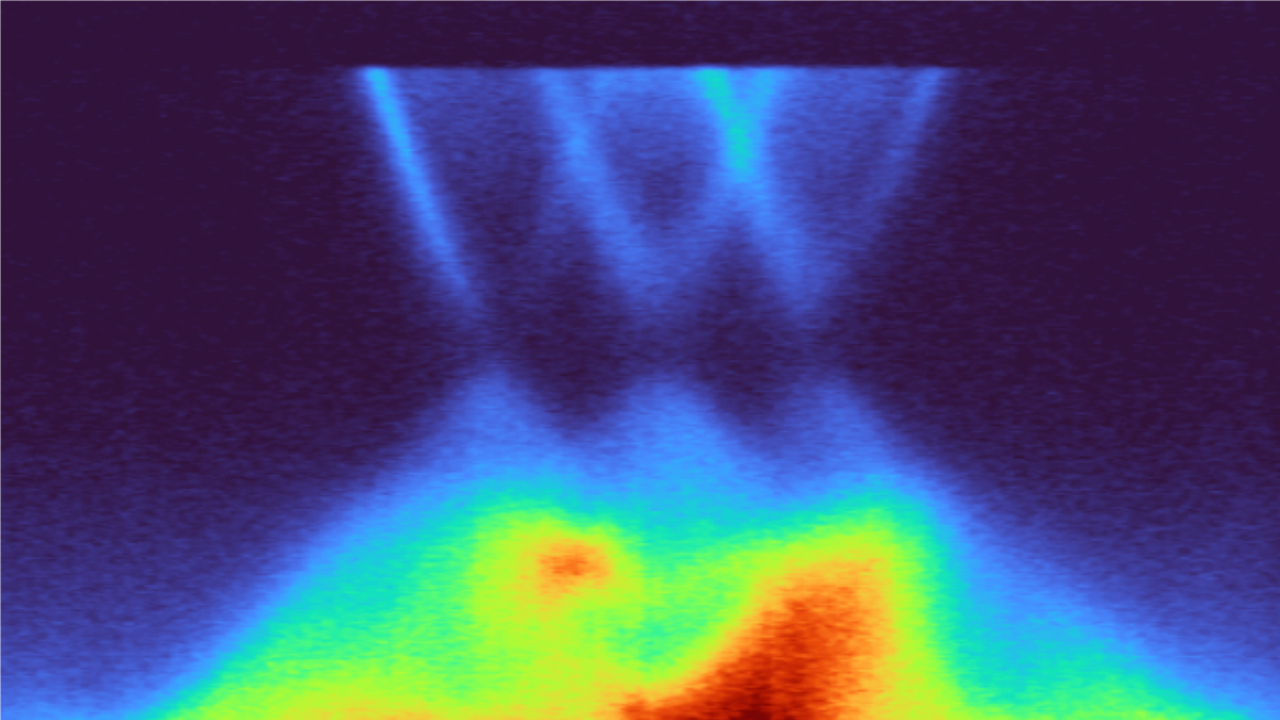Magnetic moiré patterns unlock new quantum states in topological materials
An international team, including scientists from Donostia International Physics Center (DIPC), combine magnetism and topology to create a new quantum platform for future spintronic and quantum technologies. The work published in ACS Nano opens up exciting prospects for future quantum devices.

An international team led by Donostia International Physics Center (DIPC), with the participation of researchers from Centro de Física de Materiales (CFM CSIC-UPV/EHU) and Instituto de Nanociencia y Materiales de Aragón (INMA), has unveiled a new way to engineer exotic quantum states of matter by stacking two very different materials: a magnet and a topological insulator. The result is a delicate moiré superlattice — a nanoscale interference pattern that reshapes how electrons move across the interface, revealing effects never seen before in this class of materials.
Topological insulators are peculiar substances that behave like electrical insulators on the inside but have highly conductive surfaces. On those surfaces, electrons move in a special way: their spin direction is locked to their motion, a feature that makes them resistant to scattering and promising for spintronics — electronics based on electron spin rather than charge.
“When magnetism and topology meet, we expect remarkable things to happen,” says Ilya Klimovskikh from the Donostia International Physics Center (DIPC) and one of the researchers involved in the study. “We wanted to see how these effects could be tuned by adding the extra ingredient of a moiré pattern”, he added.
To do this, the team grew ultra-thin layers of van der Waals magnetic insulators — materials known as FeX₂ (where X is chlorine or bromine) — on the surface of the topological insulator bismuth selenide (Bi₂Se₃). Because the two crystal lattices don’t align perfectly, a moiré pattern forms at the boundary, subtly modulating the electronic structure.
Using cutting-edge techniques such as scanning tunneling microscopy and angle-resolved photoemission spectroscopy, researchers mapped how electrons behaved across this landscape. They discovered replicated Dirac cones — signatures of moiré-induced electronic modulation — and tiny gaps in the energy spectrum at specific points, linked to the interaction between magnetism and the moiré potential.
“These small energy gaps are fingerprints of a magnetic moiré potential that locally breaks time-reversal symmetry,” the team explains. “It’s a sign that we’re entering a regime where magnetism and topology are intertwined at the nanoscale.”
The discovery not only confirms that moiré effects can be realized in topological materials — something that had long been theorized but never observed — but also suggests that such systems could host new topological and superconducting phases, potentially useful for quantum computing and low-power electronics.
“This is just the beginning,” the researchers add. “Moiré engineering gives us a completely new handle on how to control correlated and topological quantum states — it’s like opening a new chapter in quantum materials research.”
Publication reference
Ilya I. Klimovskikh, Sebastien E. Hadjadj, Amitayush Thakur, Aymeric Saunot, Celia Rogero, Massimo Tallarida, Ji Dai, Vesna Mikšić Trontl, Andrew P. Weber, Genda D. Gu, Jorge Lobo-Checa, Maxim Ilyn y Tonica Valla.
Emergence of Moiré Dirac Fermions at the Interface of Topological and 2D Magnetic Insulators
ACS Nano 19, 36411 (2025)
